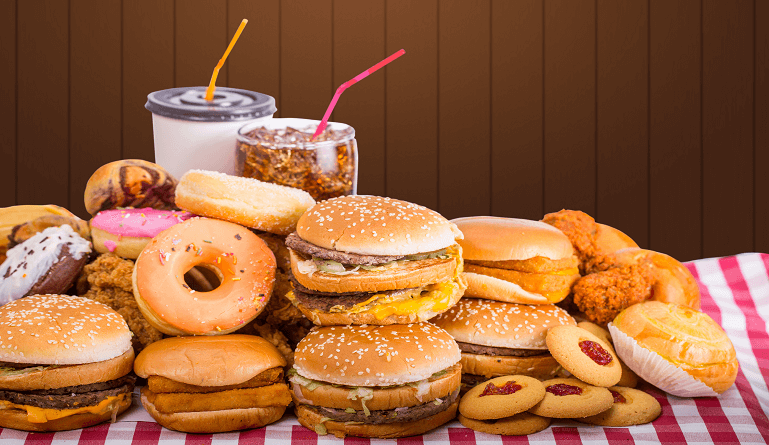Fast food is arguably among the most revolutionary customer experience (CX) phenomena of our times, and November 16 is celebrated as National Fast Food Day across the nation. On the occasion of National Fast Food Day 2022, we look at six of the world’s largest fast-food chains and some of their impactful marketing campaigns.
We also share key lessons you, as a B2B marketer, can learn from these top brands and implement them in your 2023 marketing strategy.
1. Burger King embraces cause marketing to resonate with the values-driven customer
With their campaign for International Women’s Day in China, Burger King embraced cause marketing in 2017. In certain nations, there is still a significant gender gap, and several women often feel a little letdown. While celebrating this day for women, Burger King’s choice to run its ad here calls attention to a continuing problem.
Burger King, like the multitudes of other brands eager to reflect on the day, launched their campaign by questioning Chinese women on whether they believe they might be a “queen.” Participants’ responses revealed self-criticisms. After documenting these answers, Burger King invited the women to Burger King on March 8 for the introduction of the Burger Queen. Participants received burger boxes with mirrors on the bottom of the lid, allowing them to see their image as the “Burger Queen.”
What B2B marketers should take away from this well-thought-out fast food marketing campaign is it is clear messaging. Cause marketing is a great way to connect with buyers on a one-on-one level, which is often difficult in the B2B segment. A cause marketing campaign can be the start of a long-term personal relationship built on values that translates into higher loyalty and retention.
2. McDonald’s uses Facebook Live to drive engagement in real time
In 2016, McDonald’s hosted its first Facebook Live event in celebration of National Hamburger Day in the United States. Trying to emulate the aesthetic of American painter and television personality Bob Ross, the comedian “Bevin Burger” painted three burger-themed portraits. Previously, McDonald’s avoided live-streamed videos out of apprehension about criticism or lack of social engagement.
Nonetheless, this fast-food chain’s attempt at humor was clearly a smash with its audience. The video reached 884,300 viewers in 40 minutes and garnered 43,200 interactions, such as likes, comments, and shares, according to Adweek.
There is no denying that we are living in the age of video, and live streaming can be a valuable asset for B2B marketers as well. B2B live streaming can be helpful in a host of different use cases – from customer conferences to product launches and when announcing/promoting a webinar. It can even be used for product tutorials, where buyers can ask questions in real-time.
3. KFC wins the search war with Google Ads
Kentucky Fried Chicken (KFC) is among the biggest fast-food restaurant brands in the world. Google discovered that search is becoming an increasingly crucial deciding factor for indecisive diners and that over 465,000 meal selections are completed on Google.com.au. In light of this, KFC decided to conduct an experiment to see whether search ads may indeed influence meal selections, thereby increasing online and offline sales.
The team selected two groups of statistically comparable shops based on KFC’s retail features and capabilities. Using Google’s GeoX tool, they executed a search query-focused control/exposed study in New South Wales for a four-week period. KFC’s search ads covered broad keyword subjects, allowing the company to pop up during searches for food-related inquiries motivated by impulse.
The return on investment for KFC was $2 for every $1 invested. This meant that KFC appeared wherever hungry Australians were googling, increasing the likelihood of a purchase. Based on the results of this pilot initiative, KFC intends to implement this nationwide.
The search was always a key channel for B2B marketers, especially at the top of the funnel. This fast food marketing campaign demonstrates the difference that generic keyword ads can make when applied strategically. Further, since B2B marketers need to pay only when the ad receives clicks, you can drive brand awareness for free.
4. Wendy’s empowers its social media team for greater agility
The Wendy’s Company is the third-largest rapid delivery/service hamburger business in the world, with a market capitalization of $4.5 billion as well as more than 3.8 million followers on Twitter. It wasn’t always the case that the brand’s tweets were funny and irreverent, but this has evolved through the years.
In 2017, Wendy’s discovered that its cautious social media approach was ineffective. They abolished cumbersome reviews for its Twitter account since the rigorous permission procedure was not conducive to creating an organic, engaged, and devoted following.
After strengthening its social media team, Wendy’s has blossomed into one of the most successful online brands. As seen by their Twitter profile, this is a matter of pride: “We enjoy our tweets the way we like our hamburgers: nicer than anybody would expect from a fast food restaurant.”
Even in B2B marketing, social media needs to be fast and agile – with a finger on the pulse of your audience. B2B marketers should learn an important lesson from fast food leader Wendy’s: a skilled and dedicated team for social media, along with the latest social media marketing tools, can help B2B brands stand out against the competition and buck the trend of staid B2B content on social media.
5. Domino’s removes bottlenecks on the purchasing pathway
Pizza chain Domino’s has digitally revolutionized its procurement methodology for customers — making buying more quicker and easier — than its rivals. It has transformed the company from a pizza fast food chain into a digital platform. There are 34 million possible permutations of pizzas on Domino’s menu.
Customers may personalize every part of a pizza, and there is even an option for a smartphone app that instantly places an order when it is opened. Domino’s is seen by many as a tech business that also makes pizza, and they retain this early-mover advantage even amid stiff competition.
This simple yet empowering purchase process should be an inspiration for most B2B marketers. Even when purchasing complex and multi-faceted offerings, buyers want the same ease of CX. B2B marketers should measure the customer effort score (CES) involved in the purchase and support phases of the journey and use the right tools to remove friction – like fast food giant Domino’s.
6. Starbucks insists on consistency as a brand differentiator
Starbucks is attractive, in part, because of its predictability. While Starbucks stores provide minor regional variances, the majority of their offerings are the same. This renders Starbucks a consistent and constant experience in a market that is full of variations; consumers hundreds of miles from their residence may enter a Starbucks and purchase the same coffee they drink every day as part of their daily lives.
People find this form of consistency reassuring, and it has contributed to the development of the type of intense familiarity that retains a brand in the public consciousness.
Consistency is also dependent on brand design and architecture, which includes its logo, colors, typefaces, and other visual aspects. The Starbucks logo has seen minor alterations throughout the years, but the general design has stayed mostly unchanged: a circular pattern featuring the company’s signature mermaid with two tails. Since 1987, their specific hue of green has been utilized across both the logo as well as the store’s interior decoration, with minimal alterations.
B2B marketers will observe similar practices among the world’s top B2B sellers – such as Google and Microsoft. A consistent visual branding strategy, thoroughly executed across channels, can do wonders for your B2B brand. It should feature front-and-center in online assets (like content marketing) as well as offline ones (like events and physical product packages).
As you may notice, most of these stellar fast-food marketing strategies rely on robust marketing tools. On the occasion of National Fast Food Day 2022, make sure to revisit your martech stack and adopt tools that help you roll out winning campaigns in 2023.





